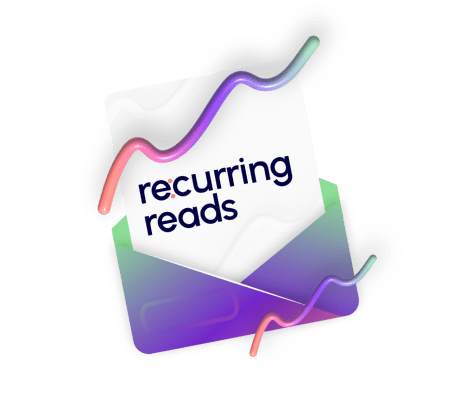How Should Customer Success Leaders Enable Their Teams? What Are Some Great CS Benchmarks to Attain?
Discover effective ways for Customer Success leaders to empower their teams. Explore top CS benchmarks for exceptional performance and growth in this insightful blog.

Customer Success (CS) that focuses on boosting customer retention, loyalty, and overall business growth is a very important function for any customer-centric business. In fact, it is essential for sustainable growth and long-term success for any business across industries. If a customer success team has to function effectively and succeed in its goal, the responsibility to empower the team falls on the shoulders of the Customer Success leader.
If you are a Customer Success executive or leader, you have landed on the right page. In this write-up, we are sharing a few valuable insights as to how a Customer Success leader should enable and empower their team. We will talk about some highly effective tactics and methods that can help you get your work done.
In addition to this, we will also highlight some great CS benchmarks that every Customer Success team should aim to achieve. These standards empower you to deliver outstanding customer services and attain long-term success for your business.
The Process of Enabling Customer Success Team
Being a Customer Success leader, you must be aware of the meaning of Customer Success and other basic things like its requirement and importance. So, let us quickly jump on the main topic i.e. the process of enabling a Customer Success Team.
Build a Strong Foundation for Your Customer Success Team
The first step in enabling a Customer Success Team is to build a strong foundation for the team. Let us see how you can effectively build a strong foundation for your CS team.
- Hire and Nurture the Right Talent – The process of building a strong base starts with recruiting the right talent for your CS team and then nurturing them to be the best version of their role. While hiring a candidate for your CS team you must look for someone who has a strong customer-centric mindset, effective communication abilities, and an enthusiastic approach towards problem-solving. It won’t be enough to just hire someone who fits the criteria; you must also provide ongoing training to upgrade their skills.
- Cultivate a Positive and Supportive Work Environment – Any person requires a positive and supportive work environment to function at the best of their abilities. You should try your best to cultivate a work environment in your organization that values cooperation and focuses on constant improvement in individuals as well as the overall work of the team. Your team should be constantly focusing on the needs of the customers and the organization should be focusing on appreciating and celebrating the team’s performance.
- Establish a Clear Goal and Vision – To help your CS team work more effectively you must establish a clear goal and vision for your company. Needless to say, the goals and vision of a CS team must align with its overall organizational goals. You should ensure that everyone on your team understands and relates to the vision and goals set by you.
Provide Your CS Team with the Right Tools and Resources
Once you have the right people on your team, ready to work in the right direction, you must equip them with the right tools and resources. Not providing your team with the right tools and resources is like wasting their talent and skills. Let us see what tools and resources can help you ensure that your Customer Success team is always ready to perform at its best.
- Customer Success Platform – A comprehensive Customer Success Platform helps your team to manage the customer data, track their interaction and identify the opportunities for engagement. Without a robust CS platform, your team will get tangled in the huge web of customer data and waste their time dealing with repetitive tasks.
- Supportive Technologies for CS – In addition to the CS platform you must also invest in other supportive technologies like CRM tools, customer analytics, AI-based customer insights, and automation technologies. These tools are helpful for CS teams to anticipate customer needs and personalize their interactions.
- Knowledge Base Resources – In addition to tools and technologies, your CS team must also be equipped with knowledge base resources. FAQs and best practices are the best set of knowledge base resources, to begin with. Each member of your CS team should have easy access to these resources so that they can refer to them whenever needed.
Establish an Effective System for Customer Success
Once you have the right team equipped with the right tools, technologies, and resources, you must work towards establishing an effective system. Having a well-defined system is important for the seamless functioning of any team. Let us have a look at how you can develop an effective system for managing your customer success responsibilities.
- Develop a Structured Customer Onboarding Process – The first step in creating a system for customer success is to develop an effective customer onboarding process. A structured onboarding process is important for a great start to the customer journey. This well-defined onboarding system ensures that customers adopt and utilize the offered product or service fully to attain their goals. This early positive experience builds the base for long-term customer satisfaction and a long-lasting relationship.
- Encourage Your Team for Proactive Engagement – Your Customer Success team must know that their function doesn’t end at the successful onboarding of customers; it in fact begins from that point. A CS team must always be proactive in its approach toward customer engagement and interaction. They must reach out to customers and offer support that the customer might need. There should always be an effort to address any potential customer issues before they escalate.
- Develop a System for Tracking Customer Health Scores – One of the most important targets for any CS team is to reduce churn. This can be done only when you have a clearly defined system for tracking customer health scores and taking prompt action. You must have a system to track key performance indicators so that you can predict the potential churn risks. These indicators can help you identify customers who require engagement on a priority level.
Utilize Data for a Better Feedback System
No business process can get better without a feedback system and Customer Success is no exception. Your CS team must get feedback about their performance to get better at their work. Having a feedback system puts your team on track for continuous improvement. Let us see how you can utilize data for developing a feedback system.
- Analyze Customer Interaction and Feedback – To understand your team’s performance the best way is to look into customer interaction and feedback. This helps you understand customers’ expectations, their pains, emerging trends, and your CS team’s performance and areas for improvement as well. Customer feedback is the best feedback showing your team’s performance and the areas where they can improve.
- Map Out Customer Journey – Customer journey mapping is not only a good way to develop a deeper understanding of your customers but also to analyze your CS team’s performance. You can utilize your customer mapping system to create a system for feedback for your CS team.
Customer Success Benchmark You Should Aim to Attain
Now that we have discussed the ways a customer success leader can enable and empower their team, we can proceed toward discussing the customer success benchmarks. A CS leader must aim to achieve key benchmarks relating to customer satisfaction, customer retention, lifetime value, etc.
A High Customer Satisfaction (CSAT) Score
CSAT stands for Customer Satisfaction and exactly as the name suggests, it is a performance indicator that tells how satisfied a customer is. The satisfaction level of a customer relates to a specific interaction or experience with a product, service, or customer support team. This score is measured by asking a simple and direct question like “How satisfied are you with our product/ service/ recent interaction with our team?” The response may include giving a rating from one to five stars or giving a number from one to ten based on the experience.
A high CSAT score indicates a higher satisfaction level for the customers. You can improve your score by improving the quality of support and interaction with your customers. You should not only try to take prompt and effective action but also utilize customer feedback to improve your performance.
| CSAT Benchmark: Aim for a CSAT score of 90% or higher. Top-performing SaaS have CSAT scores above 90%, indicating excellent customer service and high customer satisfaction. (Source: Retently) |
A High Net Promoter Score (NPS)
A Net Promoter Score is a simple yet effective metric that signifies a customer’s loyalty. It reflects the probability of a customer recommending the product or service to others. A high NPS score indicates that customers are highly satisfied and are most likely to recommend the product or service to others. It is measured by a simple question like “How likely are you to recommend our product/ service to someone?” The answer is sought on a scale of 0 to 10. Customers rating it at 0 to 6 are mostly dissatisfied and may spread negative words about the company’s product or service. Customers with ratings of 9 and 10 are the promoters of the company who will enthusiastically promote the product or service of the company.
To improve the NPS score, the focus should be on delighting the customers. A Cs team must understand the reason behind the score and act promptly to address any issues that are lowering the score.
| NPS Benchmark: Target an NPS of 70 or above. High-performing SaaS companies often have NPS scores of 70 and above, reflecting strong customer loyalty and advocacy. (Source: SaaS Capital) |
A High Customer Retention Rate and a Lower Churn Rate
The customer Retention Rate indicates a business’s ability to retain their customer for the long term. A higher customer retention rate indicates the sustainability of a business. Retaining existing customers is always more cost-effective than gaining new customers. So, every business needs to focus on making their customer retention rate higher. The high customer retention rate shows higher customer loyalty towards the brand. Businesses can increase their retention rate by focusing on the overall satisfaction of customers.
Churn Rate is just the opposite of the retention rate. It is the percentage of customers who stopped using a product or service of a business during a specific period. A high churn rate indicates dissatisfaction among customers. Or, it may also indicate that the competitors are successful in attracting the customers away.
| Customer Retention & Churn Benchmark: Aim for a customer retention rate of 90% or higher and a churn rate of 5% or lower. Best-in-class SaaS companies achieve retention rates above 90% and keep churn rates low, around 5% or less. (Source: SaaS Capital) |
In any given situation, a higher churn rate is a matter of concern for any business. The strategies applied for bettering the customer retention rate work well in lowering the churn rate as both of the indicators are indirectly proportional to each other.
Higher Customer Lifetime Value
A lifetime value of a customer indicates how much a business can expect to earn from a given customer over their lifetime. A higher lifetime value indicates that the business is able to earn more from a given customer. This is a good indicator of the overall profitability and sustainability of a business.
To increase the lifetime value of customers, businesses should aim at strategies like upselling and cross-selling while focusing on building long-term relationships.
| CLV Benchmark: Focus on increasing the Customer Lifetime Value (CLV) continuously. While specific benchmarks vary by industry and company, top-performing SaaS companies focus on maximizing CLV by delivering exceptional value and service throughout the customer relationship. (Source: Relevant) |
Conclusion
Customer Success leaders are very important for a business. They play a very important role in enabling their team to deliver exceptional customer experience and drive overall business growth. This requires them to create a customer-centric team and then equip them with the right training, tools, and technology. Developing a system for feedback is also very important for the enablement of the CS team. The knowledge of key benchmark indicators like CSAT, NPS, retention rate, etc., helps the CS executive to plan their strategy more effectively. We are sure that this write-up would have been very helpful for improving yourself as a Customer Success Leader.
You might also like:
- The Ultimate Guide to Customer Conversations – Conversations are the backbone of any relationship. When you are building your relationship with a customer, you need to be observant and careful.
- To see how SmartKarrot helps B2B companies streamline and scale customer success, Request a Demo.










